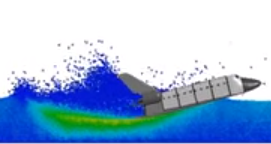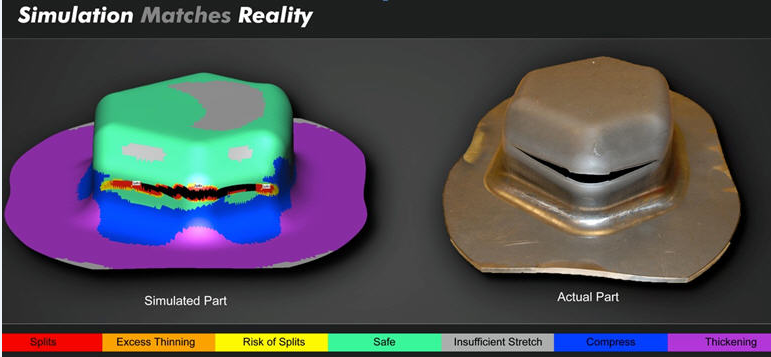Achieve Metal Stamping Success Through Smart Planning and Production
Contents
The world of metal stamping has evolved slowly but surely over the last decade or more, especially with regards to simulation technology. In the early 1990s, large OEMs had some access to very specialized software, usually based on NASA’s LS-DYNA solver, a non-linear FEA code designed originally to simulate explosions as part of the space shuttle program.

Space Shuttle Landing Simulation using LS-DYNA (NASA)
As such, computing power needed to run and solve non-linear FEA problems was intense and exclusive to massive organizations and some OEMs in the automotive industry. However, thanks to rapid advances in processing power and lowered costs of powerful PCs (quad core, even hex core CPUs), means that any size company can access extremely powerful simulation technology through service providers — such as StampingSimulation.
Metal Stamping Success
Metal stamping is a methodical and carefully planned activity. The days of “design and hope it works” are gone. Metal stamping success of even the most complex part is achieved by utilizing simulation early — to plan, design and simulate every detail of the metal stamping process.

Even more success and cost reduction is achieved when metal stamping simulation is conducted at the product design phase, to combine design function with ease of manufacture, not to mention cost analysis. Those companies that proactively and iteratively assess their sheet metal product design simultaneously with metal stamping simulation, yield much lower cost parts, and faster implementation of new products.
In fact, the competition is fierce between OEMs and, with new models being launched in recorded lead times, there is no option but to use simulation to plan a successful metal stamping process. There is little room for error and decisions must be made in the design/simulation phase, such that cutting and trialling the metal stamping tool becomes a short formality, rather than a long phase of the project.
Success using Autoform and StampingSimulation has to be experienced to truly appreciate what can be achieved by using all the simulations tools available in today’s advanced software. However, simulating alone does not guarantee a successful outcome.
The software tools must be operated by knowledgeable persons with sheet metal stamping experience in order to yield the best results. Furthermore, feedback from the simulation results must be adhered to, rather than dismissed or considered a “worst case”. Such is the accuracy of the software that a problem found in the virtual world, is a problem in the real world, and countermeasures must be implemented in the design phase so that the virtual problem never makes it to reality.

Typical goals and outputs from simulation are:
- Formability (prediction of wrinkles/splits/thickening)
- Thinning and thickening values all over the part
- Springback prediction and compensation
- Tonnage and force calculations for all aspects of the tooling
- Accurate blank shape (or hole) developments through the entire forming process
- Design and assessment of stretch carriers and pilot holes (progression tools)
- Full metal stamping process design and validation (crash form, deep drawn, stretch-formed, bending, etc)
- Surface quality assessment for “A Class” skin panels
- Blank shape optimization to minimize material usage
- Cost analysis of part and/or tooling, based on process planning
Would you like to achieve success with your metal stamping project? Our team at StampingSimulation would be happy to discuss how simulation can help you. Contact us today for a free project quote.
